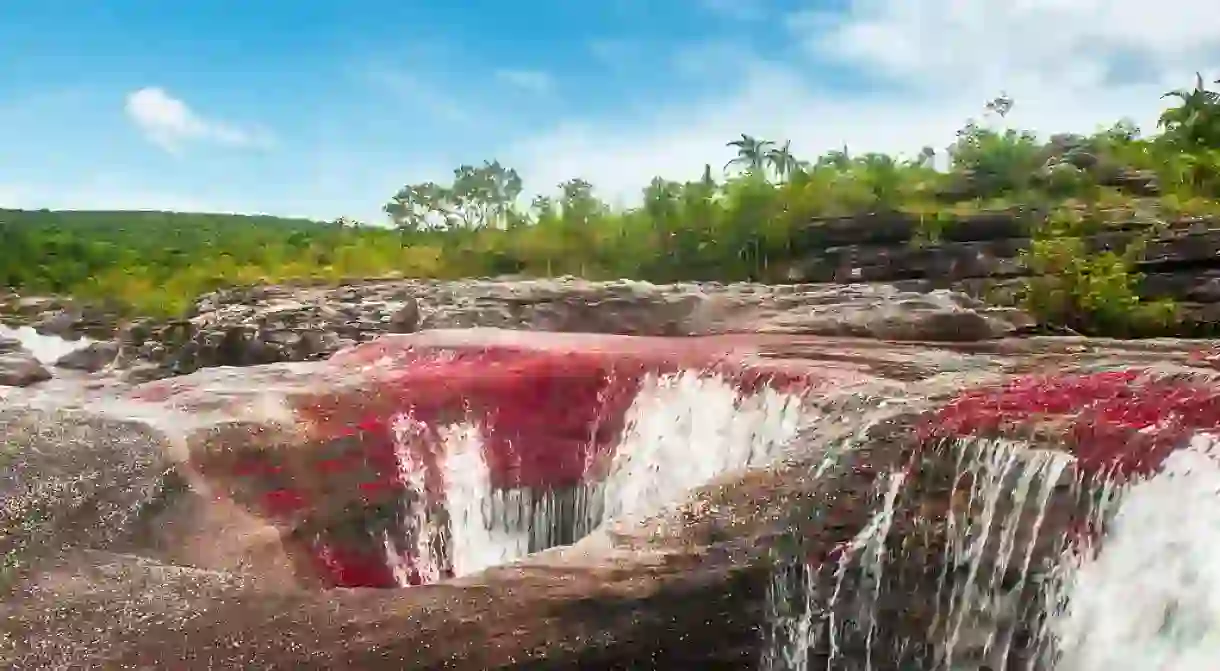Caño Cristales: What You Need to Know About the Liquid Rainbow

Caño Cristales is a natural phenomenon and wonder located in Colombia’s Meta department, within the Serranía de la Macarena National Park. Caño Cristales is a section of river within the park which stretches over 62 miles (100 kilometers). For six months of the year the tributary looks like any other river, but between the months of June and November the river comes alive with yellow, blue, green, red and black hues.
The Serranía de la Macarena National Park is a protected area covering 2,400 square miles (6,200 square kilometers), located at the point in Colombia where the Amazon rainforest, Andes mountain range and savannah plains of the East Llanos meet. This location is one of the most biodiverse ecosystems in the country, with dry forest, rainforest, shrub land and savannah. This area has a large variety of flora and fauna, with over 2,000 plants, 550 bird species, 1,200 insects, 100 reptiles, 50 orchards, eight monkey species, anteaters, jaguars, cougars and deer.

From June through to November the river contains Podostemaceae, or Macarenia clavigera which is a river weed that sticks to underwater hard surfaces, in tropical and subtropical areas. The Caño Cristales’ clear, transparent and pure water allows visitors to see the Macarenia clavigera, which, aided by the sun and lack of nutrients, matures and appears brightly through the water. In the off months the river appears the same as any other while the plants reproduce, and between June to November comes to vibrant life, thanks to the rainy season creating a rainbow river.
The Caño Cristales was closed to the public and partially destroyed by the Guerrilla, paramilitary and army between 1989 and 2009. It has slowly become safer for visitors and tour companies who have since begun to arrive in the area. The river of five colors, as it’s otherwise known, is heavily protected by the government and surrounding areas. Visitors can only access the location through specialist tour companies, and still then only between 180 and 200 visitors are allowed a day. The local towns and communities run the area, lead trips and have overall control of area. The communities are working hard to protect the area from becoming over populated and destroyed, as a result of this visitors are subject to certain rules and regulations. There is a ban on products such as suncream and insect repellent, which may cause pollution, and there are restricted swimming areas along the river.

The 62-mile (100-kilometer) section of river contains waterfalls, designated swimming areas, rapids, a fast flowing water, small circular pits or holes, which are formed by pebbles or chunks of rock knocking into each other. The magic of the fragile ecosystem is that it changes every year – with each rainy season the river comes back slightly different from the previous year, with different colors and movement of the riverbed.
The Caño Cristales can be reached by aeroplane from Bogotá to La Macarena, or from Bogotá to Villavicencio and then La Macarena. La Macarena is a town located just outside of the National Park and is home to a population of around 32,000, with a number of restaurants and hotels, making it the perfect base for trips to the Caño Cristales.

Caño Cristales is often referred to as the most beautiful river in the world, and its unique colors are making it a big tourist attraction within the country.













